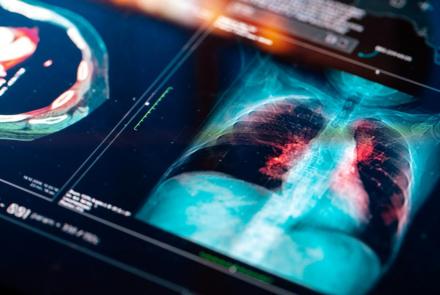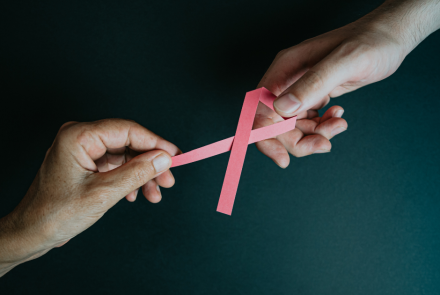The death rate from breast cancer has been declining in recent years, and mammography—which can catch the disease earlier, at a more curable stage—has played a role. Robbi Kempner, MD, FACS, Breast Surgeon with Highland Medical, P.C., and Medical Director of Breast and Women's Health Services at Montefiore Nyack Hospital, advises women ages 40 years and older to get an annual mammogram. “October is Breast Cancer Awareness Month, which is a good time to make an appointment for your yearly mammogram if you haven’t already,” she said.
Who should get a mammogram?
Some medical groups recommend that women have their first mammogram at age 40, while the American Cancer Society recommends starting at age 45. Dr. Kempner advocates for starting earlier but says every woman should discuss her options with her doctor. “I advise starting at 40 because fewer women die of breast cancer if we find it earlier,” she says. There is no designated age at which to stop getting mammograms. Women are advised to continue getting mammograms as long as they are expected to live at least another 10 years.
What does a mammogram look for?
A mammogram is a low-dose X-ray of the breast, which can show if any masses or calcium deposits are present in the breast. Masses can be many things including non-cancerous, fluid-filled cysts or non-cancerous solid tumors. They also may be a sign of cancer.
Calcium deposits can be an indication there is some activity in that area of the breast. Most of the time, calcium deposits are benign. But in about one-fourth of cases, the deposits may be an indication of cancer. “The mammogram will show if the calcium deposits are new, and what their size, shape and pattern are,” Dr. Kempner says. Additionally, biopsy (or tissue sampling) may be recommended.
For women with dense breasts—meaning more than half of the breast is made up of breast gland instead of fat—additional imaging tests may be recommended to better assess the breasts, such as an ultrasound or MRI, may be recommended.
Is there more than one type of mammogram?
There are two commonly used types of mammograms. One is digital mammography, in which a computer is used to assist in creating an image of the breast. Another type of mammography, which is used at Montefiore Nyack Hospital, is 3-D mammography, also known as tomography. This is a mammogram in which a series of images is taken. A computer then puts the images together into a 3-D picture. This allows doctors to see the breast tissues more clearly, which allows for detection of a greater number of breast cancers, and at earlier stages.
What does it mean if I am called back after a mammogram?
“Getting a call asking you to come in for repeat testing after a mammogram is stressful, but it doesn’t necessarily mean there’s a problem,” Dr. Kempner says. “It means the doctor needs more information to make an assessment.” In some cases, the tissue in one breast looks different from the other. In other cases, calcium deposits or a mass need to be examined more closely. Dr. Kempner notes that the callback rate is lower with 3-D mammography, because it provides a more accurate view of the breast tissue.
Where should I get my mammogram done?
Women should look for a mammography center that is accredited by the American College of Radiology (ACR). If possible, find one that the ACR has designated a Breast Imaging Center of Excellence. A facility that provides 3-D mammograms is best. If that is not available, make sure the facility you choose provides digital mammograms, Dr. Kempner advises.
Be your own advocate for breast health
Knowing your personal risk of breast cancer will help your doctor determine when you should start having mammograms and how often to have them. That’s why it’s important to know your family history of breast cancer, and discuss it with your doctor. If you have a parent, sibling or child with breast cancer, or multiple family members on either your mother’s or father’s side of the family who have had breast cancer, you may be at increased risk yourself. “Some women with a family history of breast cancer should have an MRI added to their breast screening,” Dr. Kempner says.
You should discuss your family history of cancer with your doctor. There are certain types of cancers which may be caused by genetic mutations. The most commonly known is BrCa mutation, but there are others which may be associated with cancer risk. Additional screening tests may be recommended, as well as genetic counseling and genetic testing.
“Women need to know what the options are for breast screening, and to ask if they need additional testing above and beyond a mammogram,” Dr. Kempner says. “As with all types of healthcare, you are your own best advocate.”






